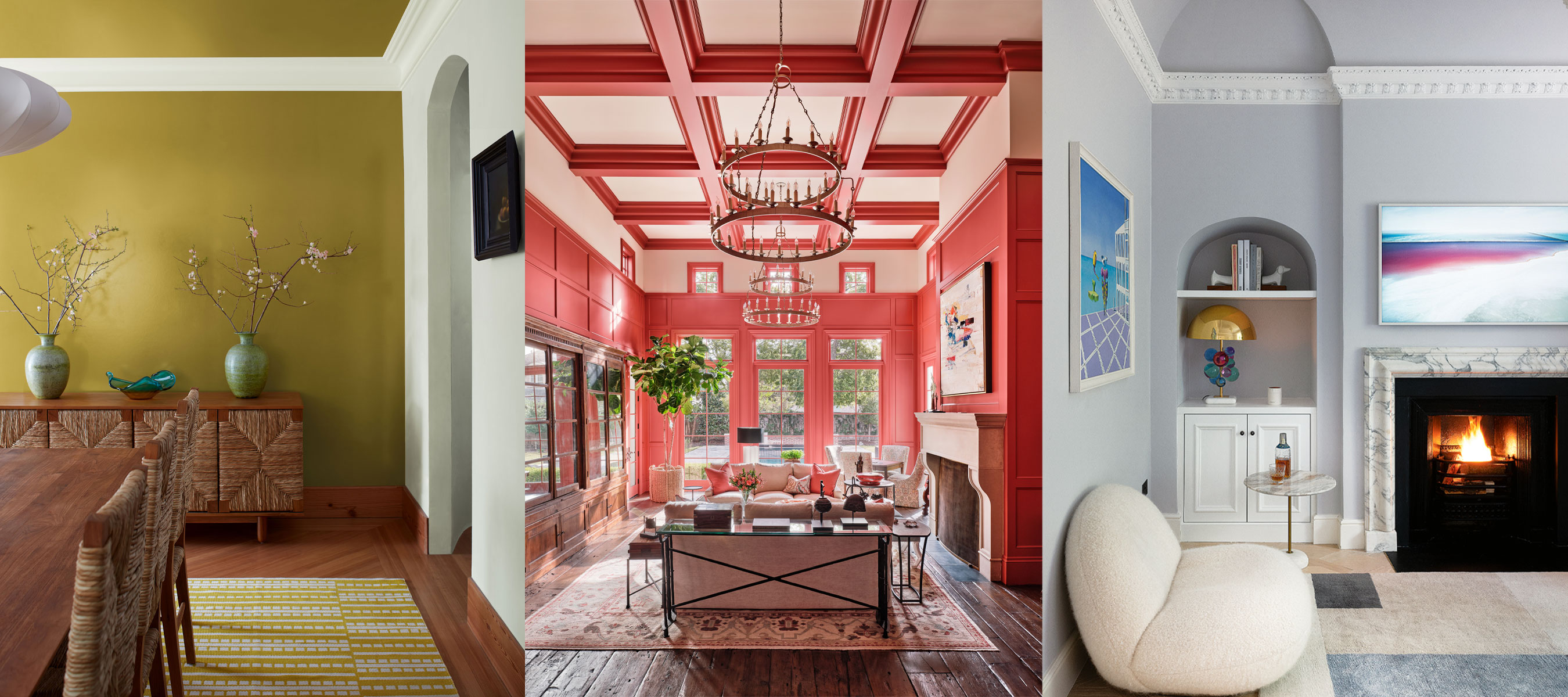
For so long, ceilings have been left white by default, helping to reflect light around a room and prevent a space from feeling too dark or closed in.
However, many of us are now embracing more creative ceiling paint ideas in our homes, transforming this often neglected fifth wall into a beautiful design feature that works in harmony with our room color ideas.
So, we ask the question, should you paint your ceiling the same color as your walls? In short, our designers agree that there are no hard and fast rules to say that both should match, it completely depends on the desired effect you are wanting to create.
Should your ceiling and walls match?
From color to paint placement, there is a lot to decide when choosing the right paint ideas for a room, so to help you create the perfect color scheme, we explore a collection of coordinated and contrasting designs for walls and ceilings and provide plenty of expert advice from the designers and paint experts in the know.
Yes, for a cohesive design that celebrates a favorite color
Whether you embrace colorful room ideas and create a bold, color-drenched look, or use white across the walls and ceiling for timeless white room ideas, a matched design can be both impactful and subtle.
Ruth Mottershead, creative director at Little Greene says, 'create a blanketed and intimate feel by painting your doors, woodwork, walls and the ceiling in a single color. The color drenching approach is particularly well suited to living rooms, bedrooms and hallways, delivering a contemporary and cocooning finish.'
1. Choose a dark shade for a cozy and cocooning space
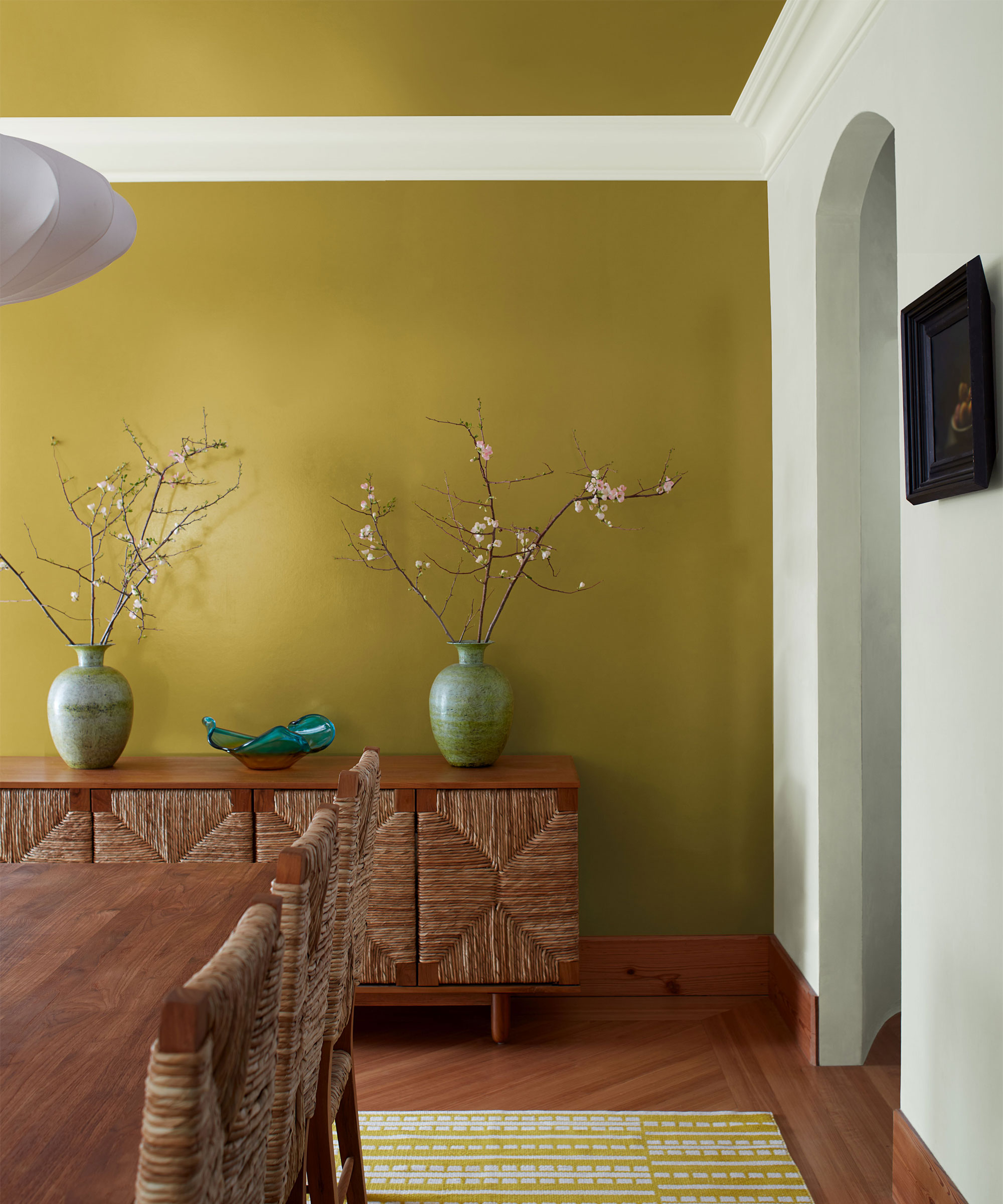
'Where you want to feel enveloped by a space, painting the ceiling and the walls the same color can be gorgeous, and achieve the feeling of a gentle hug,' says interior designer, Nicole Lanteri.
'In spaces where you want to feel cozier, where the ceilings are too tall or not proportional to the width of the room, painting the ceilings a color – especially a bolder or moodier color – will achieve a more grounded and inviting effect.'
As shown in this dining room, painted Savannah Green by Benjamin Moore, the deep, yellow-green shade works wonderfully with the dark painted wood, helping to create a cozy, earthy and comforting space that is perfect for dining and socializing with friends and family.
Whether you opt for light or dark paint ideas, Daniele Mancinetti, interior designer and founder of König Design Studio also advises, 'when dealing with a small room, there’s one trick that always works like a charm – painting your ceiling the same color as your walls. This makes it so that your eye can’t really distinguish where the corners of the room are, making it feel larger,' ideal for making a small room look bigger.
2. Or, keep things light and bright
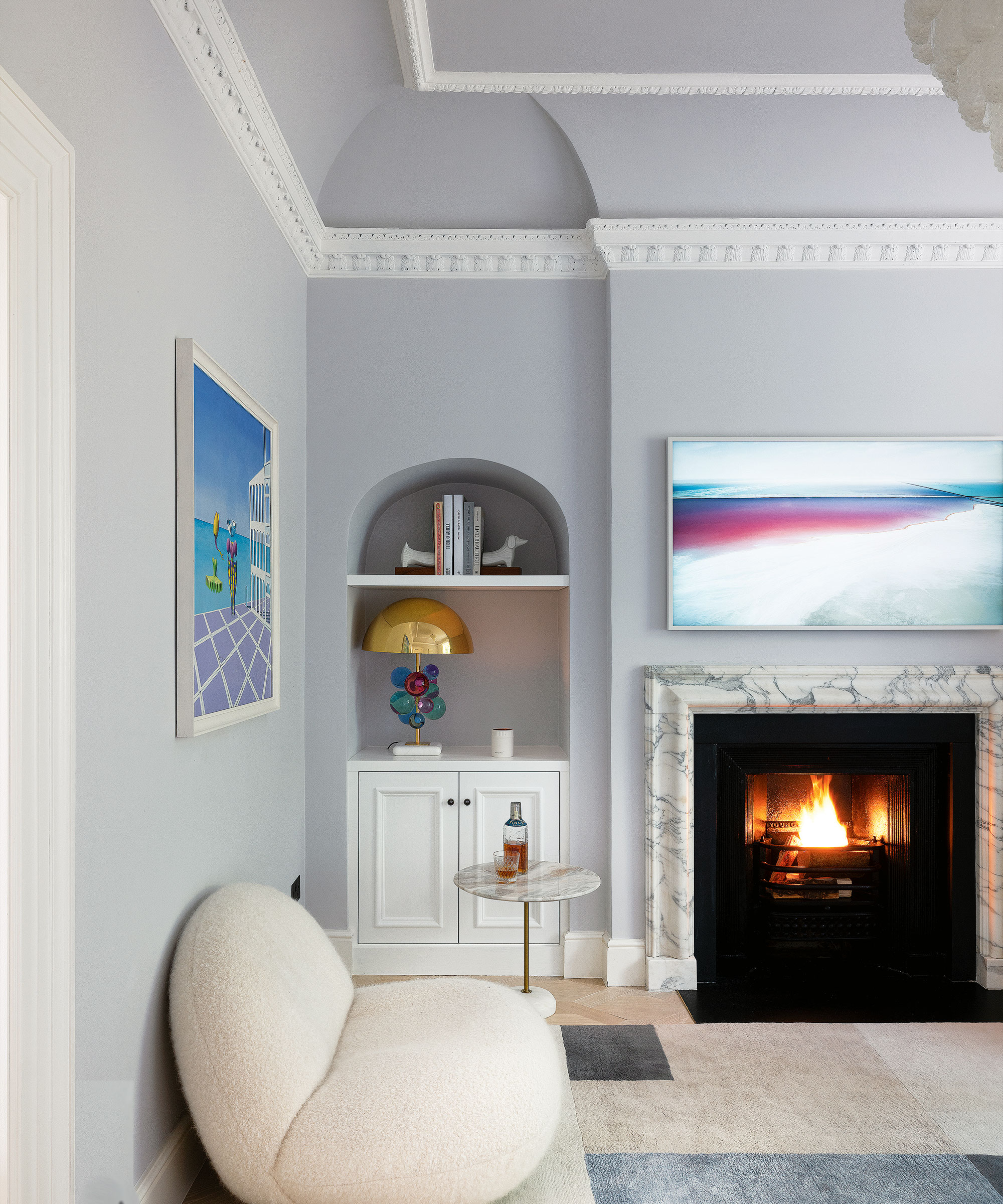
NYC-based interior designer, Artem Kropovinsky, founder of Arsight, says, 'in smaller spaces or rooms with low ceilings, painting the ceiling and walls the same color can create an illusion of height and openness. Opt for lighter shades like soft whites, creams, or pastels to maximize this effect.'
Darker color palettes are not for everyone – especially when used across both the walls and ceilings, so keep things fresh and bright by embracing lighter shades, instead, as shown in this serene blue living room.
No, enhance your fifth wall with colorful contrast
There is no denying the impact of a painted ceiling.
Enhancing this surface with color can completely transform the look and feel of a room – with this unique element of color contrast making for the most luxurious and stylish of schemes.
3. Use your ceiling to bring in a contrasting accent color
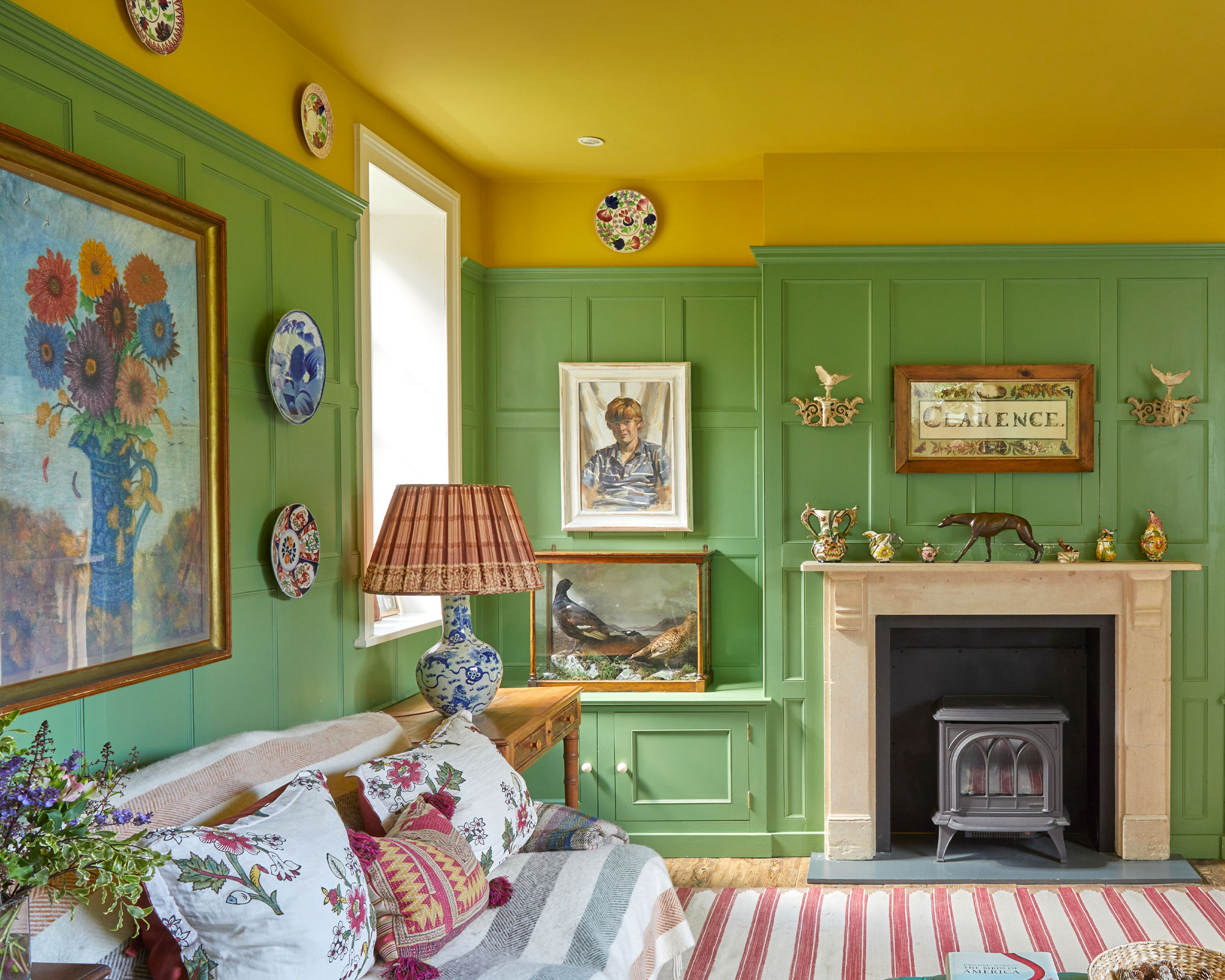
'Most of us default to a white ceiling, but this can be a missed opportunity to add another layer of design to a room. Looking at your ceiling area in a considered way will always enhance the overall design of a room,' says Andy Greenall, creative director of Paint & Paper Library.
In this vibrant yellow and green living room by Vanrenen GW Designs, designer, Louisa Greville Williams, says of the design, 'I was driving home one day and saw this incredible yellow field of rape against a really vibrant green, and just had a 'ping' moment that I was going to recreate this combination and paint this room with a yellow ceiling and green walls.
I absolutely love it. It is one of my favorite rooms and in the winter the colors make it so cozy and warm. I have painted my kitchen the same yellow as there's no door so the yellow really flows through both rooms.'
Bringing the yellow ceiling color down to the top part of the wall also helps to further connect the two colorful areas and is a technique often used in spaces with high ceilings, helping to make a room feel more cozy and intimate.
4. Look to shades in the same color family

For a more subtle element of contrast, choose different colors for your walls and ceiling that sit in the same color family.
As Andy Greenall from Paint & Paper Library says, 'for an elegant and cohesive finish, look to introducing shades of differing strengths to achieve subtle shade differentiations within an interior.
This is particularly effective when walls are painted in a slightly darker pigment and the ceiling in a tonal but lighter pigment, as this creates a feeling of height.'
As shown in this magnificent red living room, designed by Lucas Eilers, the beautiful blend of rich red and pale pink used across the walls and ceiling makes for a truly stand-out space, with the colors perfectly complementing one another.
5. Coordinate your ceiling with your trims

'For a stronger scheme, use contrasting colors across the walls, for paneling paint ideas and woodwork, to highlight and make a colorful statement of structural architectural details,' says Andy Greenall.
There is so much fun to be had with paneling and trims, as we explore in our dedicated piece on ceiling trim ideas, and highlighting these features with a color that coordinates with your ceiling is guaranteed to establish an elegant and well-thought-out design.
Choose white for a classic look
And for those looking for something more simple and traditional, you, of course, cannot go wrong with a white ceiling.
6. Keep your space light and bright with white
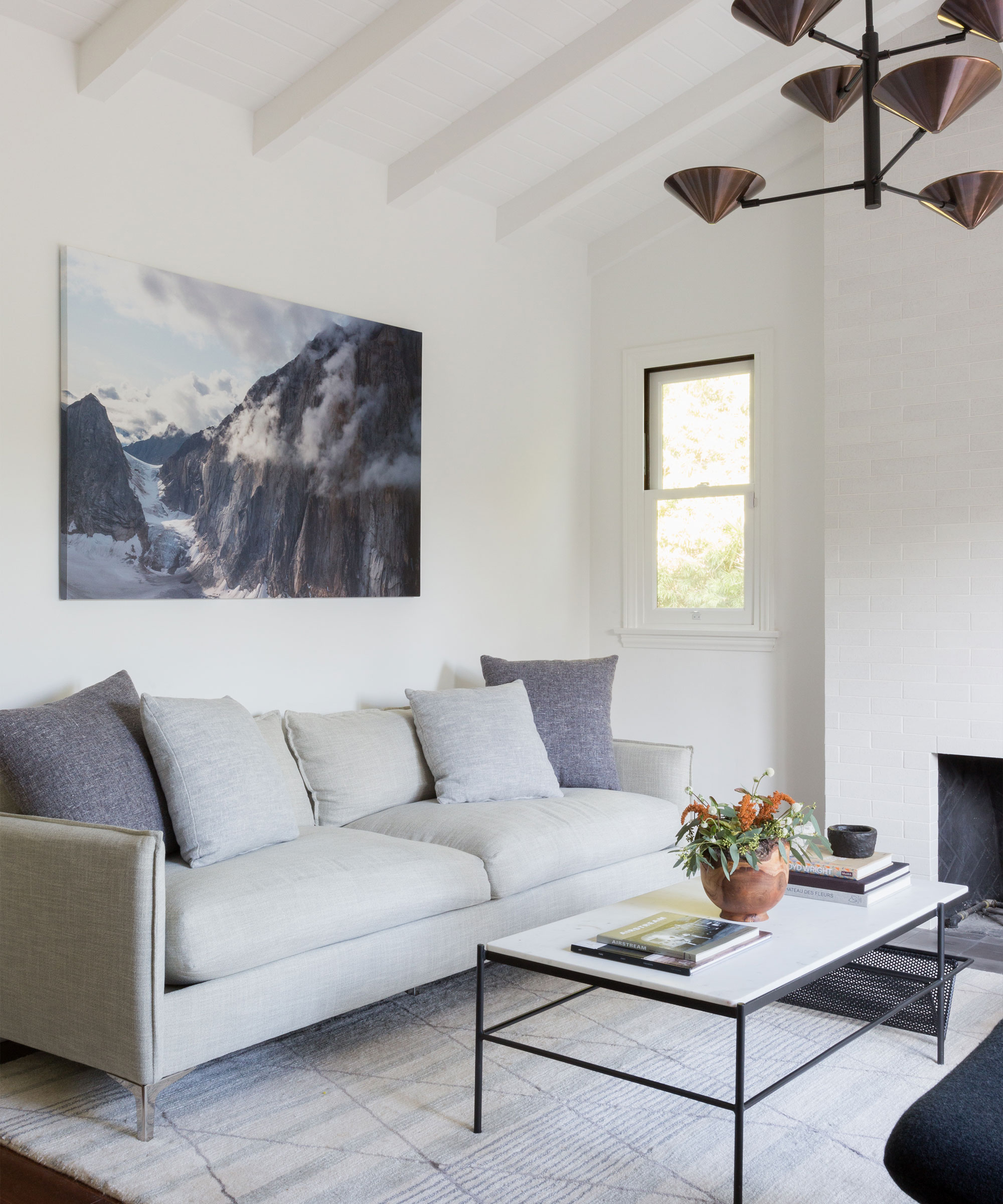
The timeless, neutral nature of white allows for ultimate flexibility and may be perfectly fitting with the design of your space.
Whether you choose a white ceiling to coordinate with your white walls or to provide a note of calming contrast with colorful paint ideas, white can work wonderfully in rooms of all sizes, shapes, and styles.
When choosing the right white, Patrick O'Donnell, Farrow & Ball's brand ambassador and color expert says, 'rather than choosing a generic white that gleams too brightly, think of the color on your wall and find a white that shares similar color notes to soften the boundary between wall and ceiling, e.g Off White with French Gray or Dimity with Joa’s White.'
FAQs
Is it better to paint ceiling or walls first?
It is always best to paint the ceiling first, as this is the trickier area to paint.
Any paint residue that gets on the walls whilst painting the ceiling will be able to be covered with ease when painting your walls second.
We explore, whether you should paint trim or walls first, in our dedicated feature.
When deciding on the right colors for your walls and ceilings, interior designer, Artem Kropovinsky, says, 'my general advice is to first gather inspiration from your favorite design resources and create a mood board that captures your vision.
Next, consider the interplay between natural and artificial light, and how it will affect the color throughout the day.
Lastly, test paint swatches on different areas of the room, taking note of how the color shifts in response to light and shadows.'







